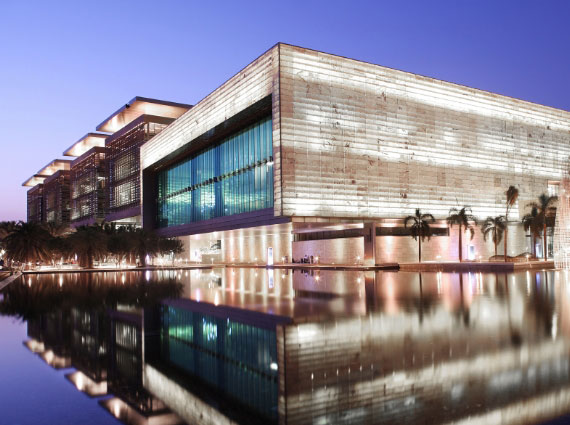Seawater Reverse osmosis (SWRO) pretreatment impact on microbial growth potential

Project Details
Program
Environmental Science and Engineering
Field of Study
Environmental science and engineering
Division
Biological and Environmental Sciences and Engineering
Faculty Lab Link
Center Affiliation
Water Desalination and Reuse Center
Project Description
The desalination of seawater using reverse osmosis membranes (RO) is an attractive solution to global freshwater scarcity. However, membrane performance is reduced by (bio)fouling. Considering that (i) the global production of desalinated seawater by RO is at 65.5 million m3/d, (ii) a membrane single membrane production capacity of 12 m3/d, and (iii) an average membrane replacement rate of ~10% to 15% per year due to fouling, then about 825000 membranes go to waste every year worldwide. Among the fouling types, biofouling –membrane deposition of bacterial cells and subsequent microbial growth– is the most difficult to alleviate. The lifetime of RO membranes would be extended if seawater pretreatment units, prior to RO, efficiently removed the material causing biofouling. The problem with pretreatment in desalination plants is that we lack a robust biological-based method to assess their efficiency to remove biodegradable nutrients and microbial cells. Current methods to assess the quality of seawater entering the RO such as turbidity and silt density index do not inform the water’s microbial growth or biofouling potential; hence the performance of the receiving RO membrane is jeopardized.
About the Researcher
Johannes Vrouwenvelder
Professor, Environmental Science and Engineering
Affiliations
Education Profile
- Ph.D., Biotechnology, Faculty of Applied Sciences, Delft University of Technology, The Netherlands, 2009
Research Interests
a€‹Professor Vrouwenvelder studies microbiological and process technological aspects of water treatment and transport. This includes fouling control of membrane systems and cooling towers, and sensors and tools for biofouling/biofilm monitoring and rapid sensitive microbial water quality monitoring. Additionally, Professor Vrouwenvelder performs numerical modelling of fouling and water treatment system performance, and studies the dynamics of the microbial ecology of water distribution systems.Selected Publications
- Early non-destructive biofouling detection and spatial distribution: application of oxygen sensing optodes | N.M. Farhat, M. Staal, A. Siddiqui, S.M. Borisov, S.S. Bucs, J.S. Vrouwenvelder Water Research, Volume 83, p. 10-20, (2015)
- Dynamics of bacterial communities before and after distribution in a full-scale drinking water network | J. El-Chakhtoura, E. Prest, P. Saikaly, M.C.M. van Loosdrecht, F. Hammes, J.S. Vrouwenvelder Water Research, Volume 74, p. 180-190. (2015)
- Experimental and numerical characterization of the water flow in spacer-filled channels of spiral-wound membranes | S.S. Bucs, R. Valladares Linares, J.O. Marston, A.I. Radu, J.S. Vrouwenvelder, C. Picioreanu, Water Research, Volume 87, p. 299-310, (2015)
- Biological stability of drinking water: Controlling factors, methods, and challenges | E.I. Prest, F. Hammes, M.C.M. van Loosdrecht, J.S. VrouwenvelderFrontiers in Microbiology, Volume 7, Issue FEB, Article number 45 (2016)
- Development and characterization of 3D-printed feed spacers for spiral wound membrane systems | A. Siddiqui, N.M. Farhat, S.S. Bucs, R. Valladares Linares, C. Picioreanu, J.C. Kruithof, M.C.M. van Loosdrecht, J. Kidwell, J.S. Vrouwenvelder, Water Research, Volume 91, p. 55-67, (2016)
Desired Project Deliverables
This research will develop a biological-based monitoring system based on microbial and biofilm growth potential to determine the efficiency of filtration pretreatment processes. The idea is to develop and implement a sensitive method to assess the microbial and biofilm growth potential SWRO pretreatment units.
We are shaping the
World of Research
Be part of the journey with VSRP
3-6 months
Internship period
100+
Research Projects
3.5/4
Cumulative GPA
310
Interns a Year